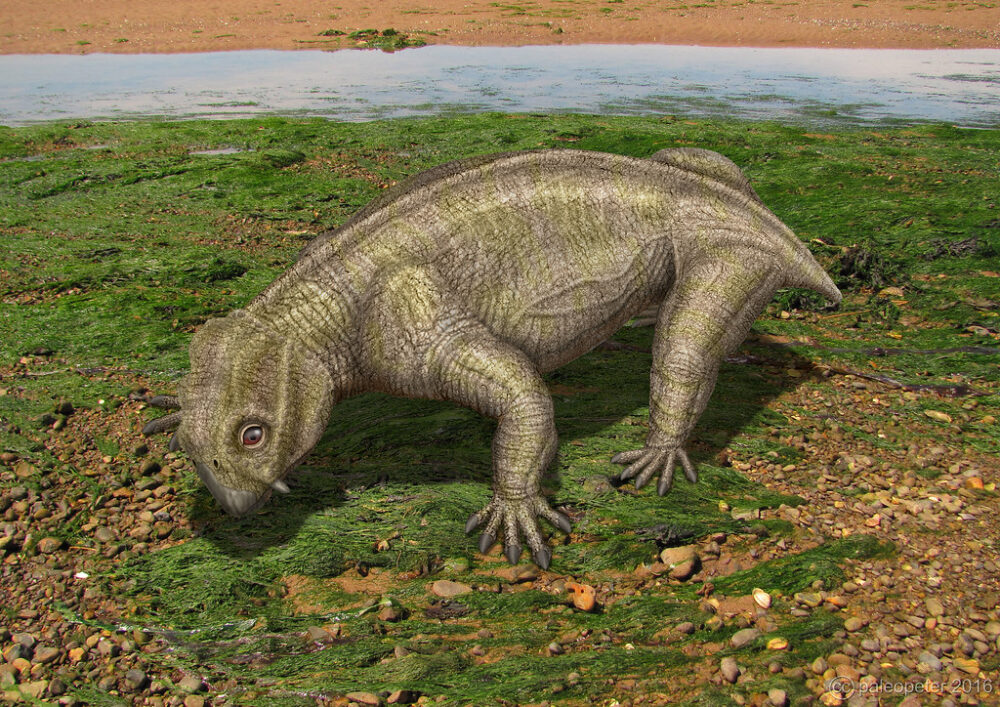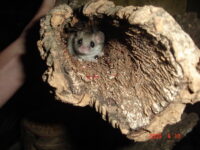When getting out of bed means preparing for an icy plunge into a winter morning, it is tempting to retreat to a blanket of warmth and return to peaceful slumber. To a shivering early riser, the ability to hibernate is one to envy. A multitude of animal species undergo torpor, any hibernation-like state in which metabolic rate and body temperature drop in order to survive times of food scarcity, such as the winter.
Recently, scientists have found evidence for the oldest known instance of torpor. In 2020, researchers Megan Whitney of Harvard University and Christian Sidor of the University of Washington reported this instance in the extinct burrower Lystrosaurus, an early mammalian genus that existed in the difficult conditions of Antarctica during the Early Triassic period. It averaged about three feet long with a heavy build, splayed out posture, beaklike face, and two small tusks. According to National Geographic, it “somehow managed to survive the worst mass extinction the world has ever known”: the Permian-Triassic extinction. By observing prolonged periods of stress in the tusks of a Lystrosaurus, the team concluded that polar populations adapted to their cold, dry, and often dark environment by seasonally reducing metabolic activity, or undergoing torpor. According to their paper, as the tusks of a Lystrosaurus grew, a tissue called dentite was “deposited during times of regular incremental growth as well as times of arrested growth reflecting metabolic stress,” acting as a record of physiological activity, often in response to environmental change. Whitney and Sidor tracked two different growth patterns in the tusks: routine growth, which appeared as thin marks resembling rings of a tree trunk, and stress marks, which were thicker bands. Hibernation zones were areas between stress marks, which had reduced dentine accumulation. Despite this remarkably old evidence, it is no surprise this inhabitant of Antarctica likely slowed its activity to conserve energy needed to withstand extremes. “Animals that live at or near the poles have always had to cope with the more extreme environments present there,” reported Megan Whitney to UW News. This finding further develops torpor as an ancient adaptation in animals, yet the question of this phenomenon reaching human physiology may seem one of science fiction.
By observing prolonged periods of stress in the tusks of a Lystrosaurus, the team concluded that polar populations adapted to their cold, dry, and often dark environment by seasonally reducing metabolic activity, or undergoing torpor.
In 1900, the British Medical Journal published a description of Russian peasants who were reportedly able to hibernate. Living in the nearly “chronic famine” of the Pskov government, scarcity of resources made spending one half of the year sleeping an economic measure. Families would go indoors at the first sign of snow, surrounding their stove and falling into a deep sleep they called “lotska.” Once a day, they would wake up to eat a piece of hard bread and drink water. The family took turns watching the fire, all returning to regular life at the start of spring. According to a BBC article, peasants of Pskov haven’t emerged since this account was revealed, but the fascination with human hibernation remains. In fact, its reality may take us to Mars.
In 2014, NASA initiated research on inducing hibernation to allow for long-term space travel. Trips to Mars are limited by the need to eat and move, so if the metabolic processes of astronauts could be drastically slowed, farther travel could become possible. According to the agency’s protocol, less food would be needed, and crew members would take turns staying awake while others hibernated for two-week periods in small pods. However, there would still remain a risk of medical complications. Without natural food reserves in human bodies, astronauts would have to be fed through tubes into their stomachs. Another large challenge is the additional expenditure of energy used to combat dropping body temperatures, which could be resolved by a drug that safely drops body temperature while inducing torpor.
In 2014, NASA initiated research on inducing hibernation to allow for long-term space travel.
Remarkably, scientists at the University of Alaska Fairbanks have been able to induce this state by pharmacologically targeting adenosine receptors in the brains of rats, who do not naturally hibernate. Not only has the U.S. Food and Drug Administration begun to consider human applications of this intervention, but in 2019, the National Institutes of Health has also funded this work with an $11.8 million grant. At its core, the ability to control body temperature can have incredible impacts on energy use and its cascading influences within the body, such as metabolism. With attention on this discovery and its potential for medical interventions as well as space travel, exploring the ancient ability of the hardy Lystrosaurus can launch us into the future of human capacity.
Communications Biology (2020). DOI: 10.1038/s42003-020-01207-6
British Medical Journal (2000). PMID: 10797035

